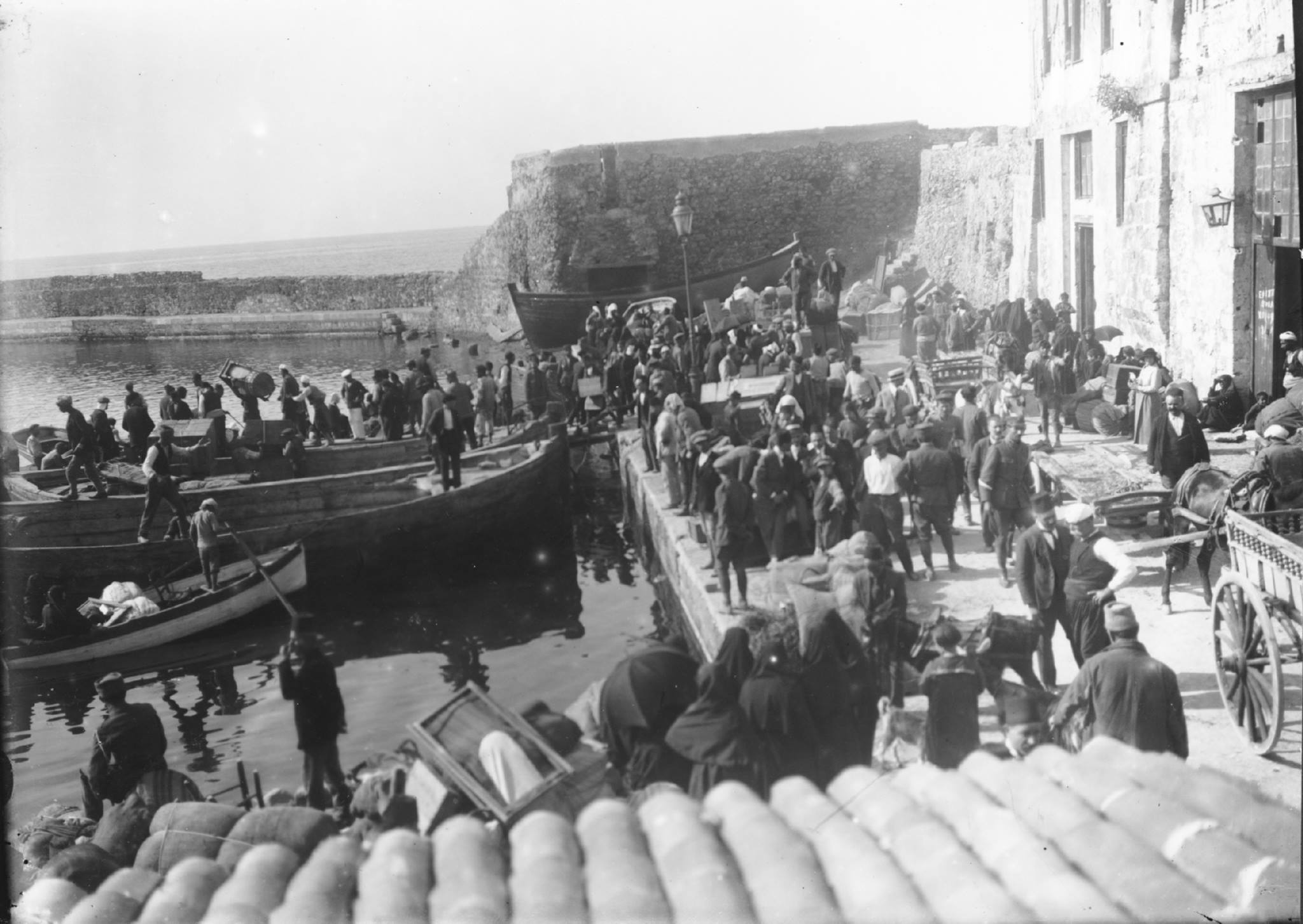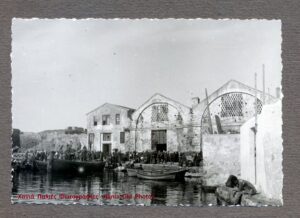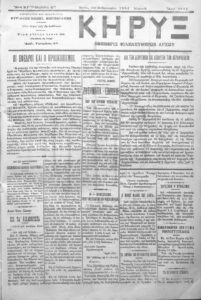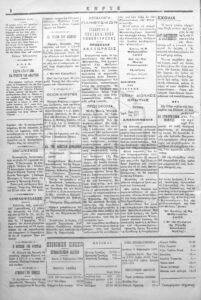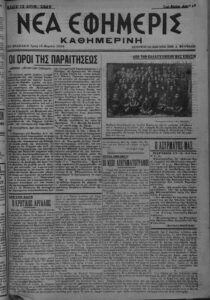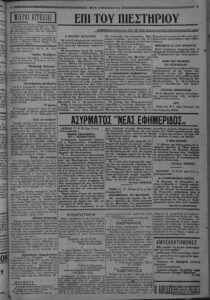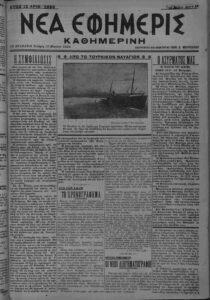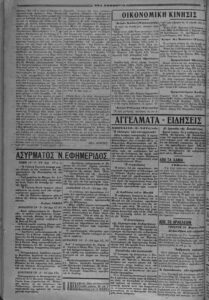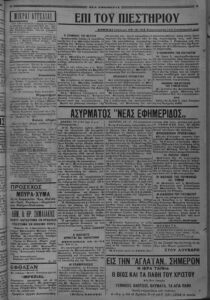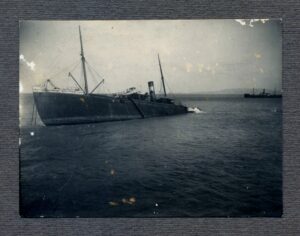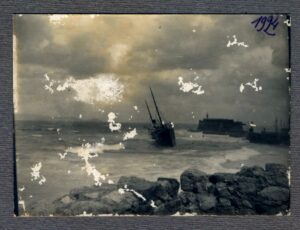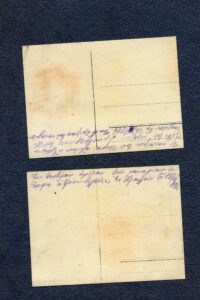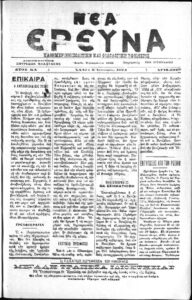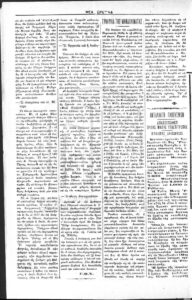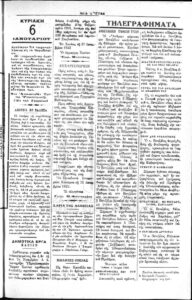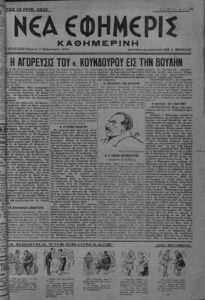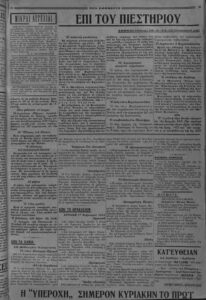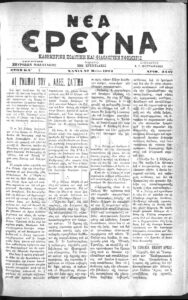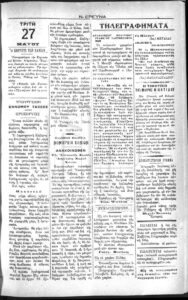The reality of leaving
City
Migration Period
City Narratives
Category
Full Description
The Population Exchange Agreement stipulated that the people who were to be exchanged would be transported from one country to another on ships and resettle. But what did that process practically entail?
There are reports in the local press which describe the departure process and the practical issues that the exchangeables faced or had to prepare for. These issues draw a more vivid picture of this mass displacement and the problems that arose during what was ostensibly a smooth process. As the articles indicate, the main issues were the time of departure, the wait in the interim, and the journey expenses.
The first departure of exchangeable Muslims from Chania took place in October 1923. Most of the exchangeable refugees had to depart in the heart of winter and the weather often impeded people’s travel arrangements. It was common for departures to delay due to bad weather. The newspaper Kiryx wrote in February 1924: ‘The steamboat Sulh [Peace] which is to collect exchangeables via Güllük has been delayed due to stormy weather. We will inform all interested parties about the new date of arrival as soon as we are apprised of it’.
In the same issue, the General Governorate of Crete reported on the authorities’ efforts to resolve the lack of entertainment venues in the city. It might appear paradoxical that this would be a matter of concern in the midst of mass population movement, but it seems that part of the local press as well as the local population had been bemoaning the fact that the entertainment venue ‘Chrysostomos’ had been requisitioned in order to house Asia Minor refugees who were waiting for their accommodation in Muslim houses. The General Governorate explained that it was waiting for the Muslim population to depart so that all Asia Minor refugees could be accommodated in the houses left behind by the exchangeables. The aforementioned steamboat, the one delayed due to a storm, was the one supposed to collect the Muslims whose houses would host the refugees staying in the ‘Chrysostomos’ venue. This unexpected delay was forcing the General Governorate to find a way to ‘overcome the emerging difficulties and house the remaining refugees [somewhere else, so that it could guarantee] the evacuation of the ‘Chrysostomos’ venue which could then be freely used by the Enkel theatre troupe’.
Among the many boats which were delayed because of the weather during that first winter of the exchange was the Turkish Umid [Hope]. The boat had dropped anchor outside the port of Heraklion in March 1924 to collect Muslims. By March 16 the Muslim exchangeables had still not boarded the ship, probably due to the weather conditions. After midnight on the night of the 16th, the boat was smashed against the rocks by waves and sank. The crew was rescued by local seamen. Over the next few days, the local newspapers announced that the departure of the exchangeable Muslims would be further delayed by the shipwreck and described the efforts made by the prefect and the British vice consul to take care of the ship’s crew and resolve all the problems arising from the delay the shipwreck had caused.
In essence, the local authorities now also had to deal with the fact that the resettlement of refugees in the Muslim houses which were supposed to have been vacated with the departure of the Umid would have to be delayed. The articles included in the entry from the Heraklion newspaper Nea Efimerida describe the developing situation. The shipwreck was documented in several photographs, two of which are included in this entry, courtesy of the collector Emmanouil Tzivilakis and his archive.
The two incidents mentioned above paint a picture of how precarious the circumstances were in the cities at that time: the delays of Sulh and Umid set off a chain reaction of problems in Chania and Heraklion respectively. The fact that these issues of varying importance – the housing rehabilitation of refugees, the departure of the exchangeable Muslims, a theatre performance in an entertainment venue, the temporary care of a ship crew – were all treated by the local press as problems that required equally urgent resolution could be an indication of fatigue settling in among the local populations, of people becoming inured to mass population movements, or of a tendency to belittle an extremely dire situation.
On the other hand, waiting for their boat to leave caused obvious problems to the exchangeable Muslims, since departure could not always be arranged with any accuracy. In January 1924, the Third Mixed Subcommittee announced that they were expecting the departure of 3,800 Muslims from Chania ‘within the week. […] The date of departure will be announced later and will be posted on the wall at the Religious Court’. As a result, thousands of people already burdened with preparing their permanent departure from the city also had to spend an indeterminate amount of time waiting for the boats that would take them away.
It is understandable that this situation made it difficult for the exchangeable Muslims to cover even their basic everyday needs: those waiting to depart probably no longer had any income sources. Their most necessary everyday items had already been packed away. All their social interactions were laden with the expectation of impending departure. This is corroborated by a piece in the Heraklion newspaper Nea Efimerida. The General Governor of Crete tried to expedite the arrival of a ship expected to collect Muslims because ‘they have been ready for departure for a long time […] they suffer as they lack the absolute basic necessities’. It is within this context that we better comprehend this farewell note written by an exchangeable Muslim from Rethymno and published in the newspaper Nea Erevna of Chania in the spring of 1924: ‘Due to my urgent departure because of the population exchange and since I cannot meet each and every one of my friends to say goodbye […] I am sending my warm regards through the press’.
Securing the funds necessary for the journey was also an important part of the departure process. According to the instructions released by the Mixed Subcommittee, those boarding the ships of the population exchange had to provide their own food for the journey. The Subcommittee’s bulletin specified that ‘those departing must carry enough food for a five-day journey’. This extra expense was difficult for some exchangeables to meet, especially for the destitute and the dispossessed who constituted the majority of the first Muslims to depart. Three months after the beginning of the population exchange process, it was announced that the transport of the exchangeables would no longer be free of charge. From March 1924 onwards, those having to depart would ‘have to cover their transport expenses themselves’. According to the instructions of the Mixed Subcommittee, the exchange process was considered complete when the exchangeables ‘surrendered the keys to their houses to the police authorities at their place of departure’ on the day they were scheduled to board the ship to Turkey.
The two photographs presented here are snapshots from the departure of the Muslims from the port of Chania, as they were boarding barges that would carry them to the steamboats. They paint a vivid picture of the scenes that unfolded. Fezzes and headscarves, European clothes and traditional salvars, policemen, dockworkers and boatmen, crates, bundles, chairs, carts and boats, horses and mules; images that recur in the photographs that depict the ports at the time and the populations that were leaving them.
